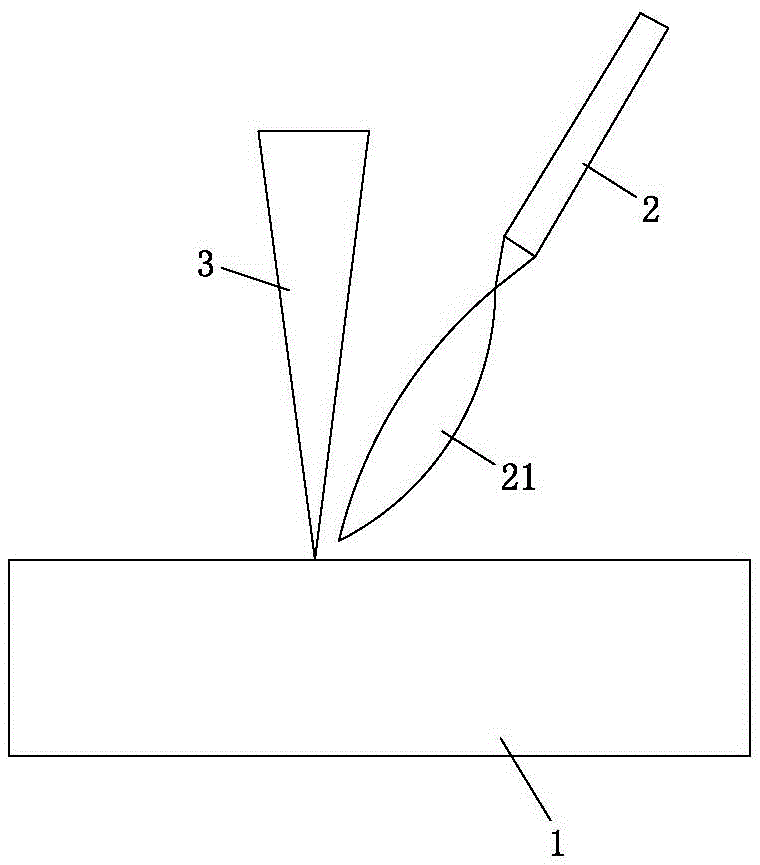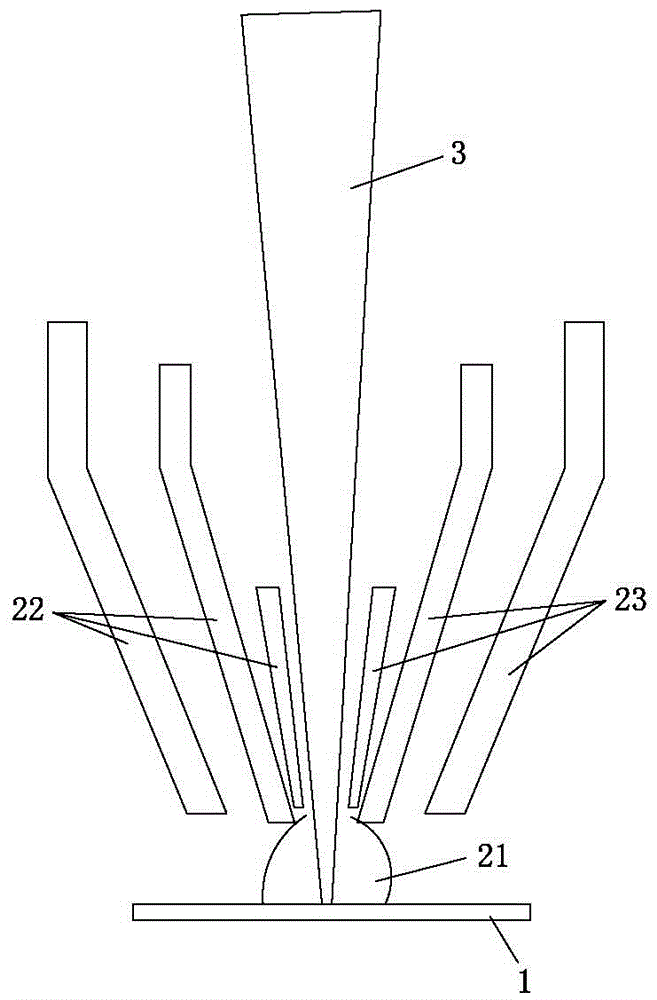A Laser Arc Hybrid Welding Method for Amorphous Alloy
A technology of amorphous alloy and laser arc, applied in laser welding equipment, welding equipment, welding/welding/cutting items, etc. Production and other issues, to achieve the effect of small thermal deformation, maintain metal structure and mechanical properties, and facilitate welding
- Summary
- Abstract
- Description
- Claims
- Application Information
AI Technical Summary
Problems solved by technology
Method used
Image
Examples
Embodiment 1
[0044] In this embodiment, the welding base material is a zirconium-based amorphous alloy Zr-Cu-Ni-Al-Nb, and the welding workpiece 1 is a zirconium workpiece, wherein the welding workpiece 1 in this embodiment is a zirconium bolt.
[0045] See figure 1 . A laser arc hybrid welding method for an amorphous alloy in this embodiment, the welding method is that the electrode 2 and the laser beam 3 are arranged in a paraxial composite manner, that is, the electrode 2 and the laser beam 3 are arranged on different axes, and the electrode 2 and the laser beam 3 are arranged on different axes. The bundles 3 form an acute angle between them. In this embodiment, the angle between the electrode 2 and the laser beam 3 is 30 degrees. Wherein, in this embodiment, the electrode 2 is a hollow tungsten electrode. The arc 21 generated by the electrode 2 in this embodiment is a MIG arc.
Embodiment 2
[0047] In this embodiment, the welding base material is a zirconium-based amorphous alloy Zr-Cu-Ni-Al-Nb, and the welding workpiece 1 is a copper workpiece, wherein the welding workpiece 1 in this embodiment is a copper nut.
[0048] See figure 1 . A laser arc hybrid welding method for an amorphous alloy in this embodiment, the welding method is that the electrode 2 and the laser beam 3 are arranged in a paraxial composite manner, that is, the electrode 2 and the laser beam 3 are arranged on different axes, and the electrode 2 and the laser beam 3 are arranged on different axes. The bundles 3 form an acute angle between them. In this embodiment, the angle between the electrode 2 and the laser beam 3 is 45 degrees. Wherein, the arc 21 generated by the electrode 2 in this embodiment is a TIG arc.
Embodiment 3
[0050] In this embodiment, the welding base material is a zirconium-based amorphous alloy Zr-Cu-Ni-Al-Nb, and the welding workpiece 1 is a nickel workpiece.
[0051] See figure 1 . A laser arc hybrid welding method for an amorphous alloy in this embodiment, the welding method is that the electrode 2 and the laser beam 3 are arranged in a paraxial composite manner, that is, the electrode 2 and the laser beam 3 are arranged on different axes, and the electrode 2 and the laser beam 3 are arranged on different axes. The bundles 3 form an acute angle between them. In this embodiment, the angle between the electrode 2 and the laser beam 3 is 40 degrees. Wherein, the arc 21 generated by the electrode 2 in this embodiment is a plasma arc.
PUM
| Property | Measurement | Unit |
|---|---|---|
| tensile strength | aaaaa | aaaaa |
Abstract
Description
Claims
Application Information
 Login to View More
Login to View More - R&D
- Intellectual Property
- Life Sciences
- Materials
- Tech Scout
- Unparalleled Data Quality
- Higher Quality Content
- 60% Fewer Hallucinations
Browse by: Latest US Patents, China's latest patents, Technical Efficacy Thesaurus, Application Domain, Technology Topic, Popular Technical Reports.
© 2025 PatSnap. All rights reserved.Legal|Privacy policy|Modern Slavery Act Transparency Statement|Sitemap|About US| Contact US: help@patsnap.com



